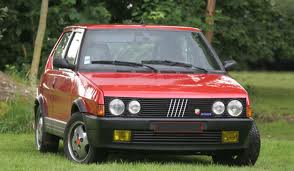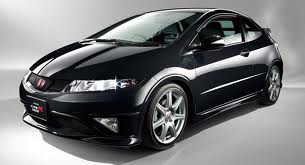


This edition of the Mercedes 300 SEL 3.5 is the 4 speed / Manual version and was first brought out in 1969. This was at around the same time as the introduction of the 1970 Monteverdi Hai 450 SS and the 1969 McLaren M6 GT 5.7 V8.This particular Mercedes 300 has a 3499cc Naturally Aspirated Petrol powerplant with 8 cylinders in a V formation.
The 300 shares its Petrol V8 engine configuration with the likes of the 2023 Dodge Challenger SRT Demon 170 and the 2023 Ferrari SF 90 XX Spider 4.0 V8 Turbo. If you're looking for other fast cars which share the 300's Rear Wheel Drive, Saloon combination then how about the 1982 Fiat X1/9 1.5 8V or the 1965 Aston-Martin DB6 1965.
Weighing in at 1630 kgs (3593 lbs) this makes the Mercedes 300 SEL 3.5 in the same weight category as the 2022 BMW Z4 M40i 3.0 Turbo or the give or take 50kg.
In terms of power the 3499cc 16V V8 engine produces 197 bhp (146 kW) @ 5800 rpm similar to the 2020 Abarth 695 70th Anniversario 1.4 Turbo (177 bhp) or the 2020 Audi A1 Sportback 40 TFSI S tronic S line (197 bhp).
The Naturally Aspirated V8 throws out 211 lb-ft (286.0 Nm) @ 4000 rpm placing it with cars of similar torque performance figures such as the 2022 Mini Cooper John Cooper Works Cabrio 2.0 Turbo (236 lb-ft) or the 2020 McLaren Sabre 4.0 V8 Twin Turbo (206 lb-ft).
If one combines the weight with power or torque performance for the Mercedes 300 you can get a better idea of it's real world performance.
![Volkswagen-VW Beetle RSi 3.2 V6 - [2000] image Volkswagen-VW Beetle RSi 3.2 V6 - [2000] image](/editionimages/1122.jpg)
The 2000 Volkswagen-VW Beetle RSi 3.2 V6 (145.8 bhp per ton) has similar Bhp Per Ton stats as the Mercedes 300.
The Mercedes 300 has a Power to weight ratio of 120.8 bhp per ton and 129.4 lb-ft per ton. Bhp Per Ton figures of the 1969 300 competing with the 2000 Volkswagen-VW Beetle RSi 3.2 V6 (145.8 bhp per ton) or the 1997 Volkswagen-VW Golf 2.8 VR6 4MOTION (145.6 bhp per ton).
If you agree with the late great Carroll Shelby then arguably an even better indicator of potential performance, Torque. Use weight as well and you end up with - Torque per ton, with the Mercedes 300 generating around 129.4 lb-ft per ton. If you're curious as to what other cars have as much torque to weight then look no further than the 1957 Jensen 541 R 4.0 12v (154.4 lb-ft per ton) or the 1985 Renault 25 2.5 V6 Turbo (154.4 lb-ft per ton).
With a 0-60mph time of 8.70 secs or a 0-100km/h (0-62mph) of 9.0 secs, this made the Mercedes 300 SEL 3.5 as fast as the 2017 Ford Fiesta 1.5 TDCi ST-Line 120 (8.70 secs) the 2011 Renault Twingo 1.6 133 Renaultsport Cup (8.70 secs) the 2009 Peugeot RCZ 2.0 HDi 200 GT (8.70 secs) the or the 2003 Lancia Thesis 3.2 V6 24v Comfortronic (8.70 secs). This Mercedes 300 SEL 3.5 is also faster than the 2013 Vauxhall-Opel Zafira Tourer CDTi BiTurbo (8.80 secs) the the 2002 Toyota Camry 3.0 V6 (8.80 secs) the and the 2000 Mitsubishi FTO 2.0 GPX (8.80 secs).
When talking about the performance of the Mercedes 300 on the drag strip it can reach a quarter mile in an estimated 16.51 secs @ 82.9 mph. Similar performance down the quarter mile can be found with the the 1966 DeTomaso Mangusta 4.9 V8 (16.45 secs), the 1972 Jaguar E Type 5.3 V12 (16.46 secs), and the 2008 Mazda RX8 R3 231ps (16.46 secs).
Modern performance cars are often artificially restricted to 155mph. The 1969 version of the Mercedes 300 SEL 3.5 has a maximum speed of 130mph.
If maxing out your car on the AutoBahn is your thing and you're wondering what's faster than the 1969 Mercedes 300 SEL 3.5 then how about the 2010 Audi A1 A1 1.4 TFSI S-Tronic (141 mph), the 2009 Renault Clio 2.0 RenaultSport III 200 Cup (141 mph), or the 2006 Seat Leon 1.8 20vt Cupra R 210 (141 mph).










Peugeot 205 Rallye 1.3 8v
Engine: Naturally Aspirated Petrol | 1294cc 8v St4
Top Speed: 118 mph
0-60mph: 9.30 seconds

Jaguar F Type Supercharged 5.0 V8
Engine: Supercharged Petrol | 5000cc 32v V8
Top Speed: 284.8 kph
0-100kph: 4.5 seconds



















